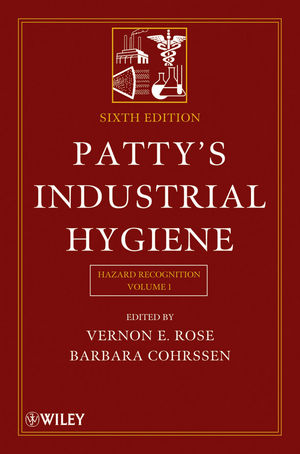Industrial Hygiene: Exposure Assessments

The exact number of occupational diseases that occur in the United States is unknown; however, most occupational disease cases that are litigated involve multiple defendants. By implementing a systematic exposure assessment and control process, you can help protect your company from such litigation and also protect the health of your employees. The basic steps include the following:
1) Gather information and data to characterize the project site (or facility), process, operations, work force and environmental agents.
The first step in assessing exposures to environmental agents is to have a thorough understanding of the processes, tasks and contaminants to be studied. You can obtain information through observations, the use of direct-reading devices, and interviews with workers, managers, maintenance personnel and other relevant personnel (such as technical experts).In addition, review records and documents (including past exposure monitoring data), relevant industry standards, and/or other literature. The information gathered can then be used to both define similar exposure groups (SEGs) and make the initial judgments on exposures.
2) Define similar exposure groups (SEGs) by process, task, environmental agents and engineering controls.
The goal of defining SEGs is to minimize the variability of exposure monitoring data. For highly dynamic work sites where activities and related exposures may vary significantly from day-to-day (e.g., construction sites), SEGs should be categorized by the tasks or activities being performed. Categorizing SEGs by process, task, environmental agent and engineering controls is often preferred over defining SEGs by title and/or occupation. For example, welding has the potential of generating metal fumes and fluorides in addition to other gases; thus, the SEGs may be defined by the specific welding technique, the type of material being welded and welding consumable, the welding task, the environmental agent, and the engineering controls.
3) Make your best “judgment†on the exposure profile for each SEG based on available information.
After the SEGs are defined and categorized, a judgment can be made about the exposure profile for each SEG, using the information collected on the agent’s toxicity and relevant sampling data that is available. The exposure judgment consists of assigning an exposure rating, health effects rating, and uncertainty rating to each SEG. (See Figure 1.) These qualitative ratings are used to determine the acceptability of the exposure profile, identify the need for additional exposure monitoring, and prioritize the data collection needs.An exposure rating is an estimate of exposure level relative to the applicable occupational exposure limits (OELs). Exposure ratings assist with streamlining the assessment process, particularly during initial assessments when monitoring data are often sparse.
If there is a lack of exposure monitoring data available, the initial exposure profile may merely be a “best guess,†which leads to a highly uncertain exposure rating. The exposure rating may also be based on the relative exposure levels, surrogate data (i.e., exposure data from another SEG) and/or exposure modeling, but the method of judging the exposure level affects the uncertainty rating. Uncertainty is a function of 1) confidence in the health effects data; 2) confidence in exposure rating; and 3) reliability of existing controls. For each SEG, an uncertainty rating is qualitatively assigned.
The health effects rating is based on the toxicity of the environmental agent and is a factor in assessing the exposure risk and prioritizing additional exposure monitoring needs.
4) Determine the acceptability of exposure and/or need for additional exposure monitoring.
For each SEG, categorize the exposure profile as being acceptable, unacceptable or unknown (i.e., not enough information). For unacceptable exposure profiles, determine and prioritize appropriate control measures by risk of exposure (i.e., exposure level and health effects). For acceptable exposure profiles, determine whether routine monitoring is required to ensure the exposure profile remains acceptable. A threshold of 10% of the OEL is recommended (by AIHA) as a trigger for beginning to collect exposure-monitoring data to support the exposure judgment in order to establish adequate confidence in the exposure assessment.For SEGs that have uncertain exposure profiles, prioritize further exposure monitoring and/or information gathering needs by both the risk of exposure and the uncertainty rating of the exposure profile. The information gathering priority rating is calculated by the following:
Information gathering priority rating = (exposure rating) x (health effects rating) x (uncertainty rating)
The purpose of calculating the priority rating is to establish an information gathering priority ranking among SEGs so that you can efficiently utilize your resources.
5) Collect additional data and re-assess the exposure profiles as needed.
If necessary, conduct additional exposure monitoring, gather more information about the health effects of the agent, and/or obtain other information that would lower the uncertainty rating.Sampling strategy is important. Exposure monitoring can either incorporate a worst-case sampling strategy or a random sampling strategy. A worst-case sampling strategy involves subjectively selecting and collecting personal air samplings that are considered to represent the worst-case exposure for each SEG. A random sampling approach is a more quantitative exposure monitoring strategy. It results in higher confidence level exposure judgment since a worst-case sampling strategy relies on subjectively identifying the “worst-case†exposure.
Additional exposure monitoring data also allows for the comparison of the exposure profiles of each SEG to determine if any of the SEGs should be re-classified.
Looking for a reprint of this article?
From high-res PDFs to custom plaques, order your copy today!







